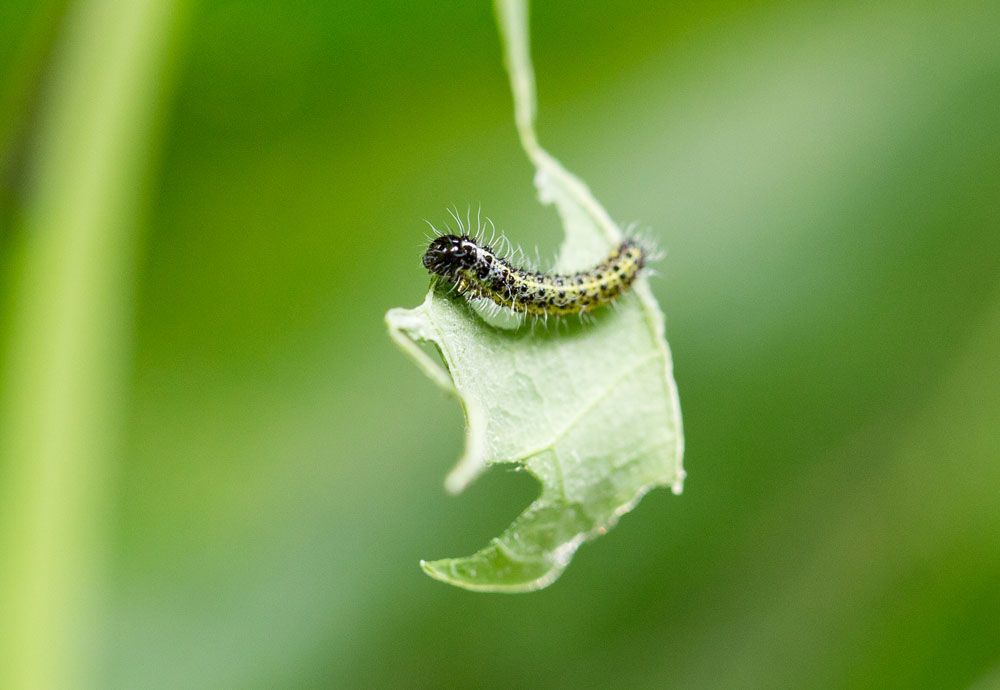
Leaf-Feeding Caterpillars
Leaf feeding caterpillars
Description:
Leaf- feeding Caterpillars are the infantile stages of insect species or butterflies and belong to the order Lepidoptera. They are characteristic of insects that develop in the egg, larva, pupa, and adult stages, known as full metamorphosis. Most occur in modest amounts regularly and are rarely harmful. Small larvae and the early stages of leaf or needle eating might be used to detect early signs of a problem. Applications of insecticides against caterpillars that form protective structures must be made soon after the eggs hatch.
What Does Caterpillar Damage Look Like?
Caterpillars that devour leaves and flower buds gnaw holes in the leaves and flower buds. The size of the holes the caterpillars construct grows with them. Caterpillar damage might appear to be slug damage. Look for signs of slime (from slugs) or dark greenish grains to tell them distinct (caterpillar excrement).
Types of Some common leaf-feeding caterpillars:
- Tobacco hornworm
- Cabbage looper
- Beet armyworm
- The western tussock
- Fall webworms
- Leaf rollers
- Select caterpillars and egg masses by hand (if you can find them). Crush or immerse them in soapy water. After this, the leaves have fallen in the winter, and it is simpler to discover tent caterpillar egg masses. They resemble silvery-brown, solidified foam rings (approximately 1 cm wide) that partially encircle tiny tree branches.
- Remove the web-spinning caterpillars’ nests. Beginning in mid-April, search for tent caterpillars while their nests are still tiny.
- Make use of tree bands (for winter months only). Wrap a 15 cm wide ring of plastic around each tree trunk at an appropriate height. Apply sticky adhesive on the band. Female winter moths cannot fly. Therefore they must climb up trunks to deposit eggs on the branches. Install bands in mid-October and remove them in February. Bacillus thuringiensis kurstaki spray (BTK). Garden centers sell this natural bacterial illness for caterpillars. It is non-toxic and has no negative effects on animals or helpful insects. Caterpillars must consume BTK to infect them; it has no impact on eggs or adults.
- Check for caterpillars before spraying since damaged leaves, and empty webs can linger on branches long after caterpillars have departed. Spray in the evening when no rain is predicted, and make sure all leaves are completely covered. Spray BTK on leaf rollers right after the flower petals fall.
